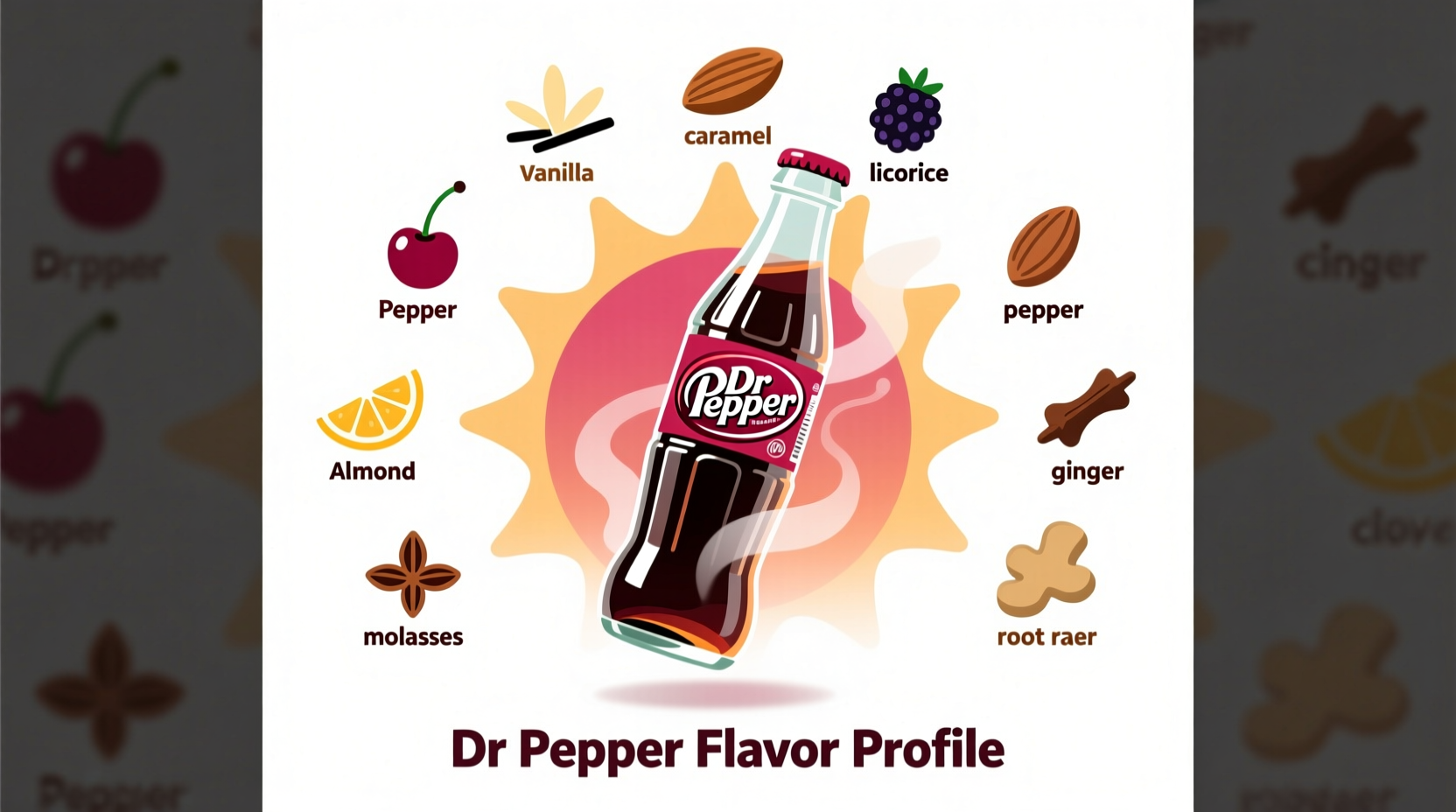For decades, fans have debated what exactly gives Dr Pepper its distinctive taste that stands apart from colas and root beers. Understanding the complex flavor composition of this iconic American soft drink requires examining both verified facts and persistent myths surrounding its creation.
The Official 23 Flavors Explained
Despite widespread speculation, Dr Pepper has consistently maintained that its signature beverage contains exactly 23 flavors—not 24 as some rumors suggest. While the company keeps the precise recipe confidential, historical records and flavor analysis by food scientists have identified several key components that contribute to its unique profile.
The most commonly recognized flavors include:
- Cherry (providing the bright top note)
- Vanilla (adding smooth sweetness)
- Caramel (contributing depth and color)
- Amaretto (almond-like flavor)
- Black licorice (distinctive herbal note)
- Wintergreen (subtle cooling element)
- Prune (adds fruity complexity)
- Almond (complements the amaretto)

Flavor Evolution Timeline
Understanding how Dr Pepper's flavor profile developed requires examining its historical journey:
| Year | Development | Flavor Significance |
|---|---|---|
| 1885 | Created by pharmacist Charles Alderton in Waco, Texas | Original "Waco" formula developed with 23 flavor components |
| 1904 | First national marketing campaign | "Drink a Bite of Life" slogan introduced with emphasis on "23 flavors" |
| 1920s | Formula standardized across bottling plants | Consistent flavor profile maintained despite regional production |
| 1970s | High-fructose corn syrup replaces sugar | Subtle flavor shift while maintaining core profile |
| Present | Multiple variations introduced (Cherry, Vanilla, etc.) | Original formula remains protected as trade secret |
Debunking Common Flavor Myths
Several persistent misconceptions surround Dr Pepper's flavor composition. The most widespread myth claims there are 24 flavors rather than 23. Dr Pepper Snapple Group has repeatedly confirmed the official count remains 23.
Another common misunderstanding involves specific ingredients. Despite popular belief, Dr Pepper does not contain:
- Pepper (the name refers to a doctor, not the spice)
- Rhubarb (though sometimes mistaken for this flavor)
- Prune juice (contains prune flavor but not juice)
How to Taste the Individual Flavors
Experienced flavor analysts recommend these techniques to identify the distinct components in Dr Pepper:
- Chill the beverage to standard refrigerator temperature (38-40°F) as cold enhances certain flavor notes
- Smell before tasting to detect the top notes of cherry and citrus
- Sip slowly to identify the mid-palate flavors like licorice and amaretto
- Notice the aftertaste where vanilla and caramel notes become more apparent
Professional tasters note that the flavor profile changes slightly depending on temperature and whether the beverage is consumed from a bottle versus a fountain dispenser.
Dr Pepper vs. Similar Beverages
Understanding what makes Dr Pepper unique requires comparison with other popular soft drinks:
| Characteristic | Dr Pepper | Root Beer | Cola |
|---|---|---|---|
| Primary Flavor Notes | 23 distinct fruit and spice elements | Sassafras, wintergreen, vanilla | Citrus, cinnamon, vanilla |
| Sweetness Level | Moderate-high (less than most colas) | High | High |
| Acidity | Moderate | Low | High |
| Distinctive Element | Cherry-licorice base | Sassafras | Kola nut |
This complex flavor matrix explains why Dr Pepper occupies its own category rather than fitting neatly into cola or root beer classifications. Food chemists note that the precise balance of sweet, tart, and herbal elements creates what sensory scientists call "flavor layering"—where different components become apparent at different stages of consumption.
Practical Flavor Applications
Understanding Dr Pepper's flavor profile isn't just academic—it has practical applications for home cooks and mixologists. The beverage's complex sweetness works particularly well in:
- Barbecue sauces (the cherry notes complement smoked meats)
- Marinades for ham and pork (enhances natural sweetness)
- Cocktail mixers (pairs well with bourbon and citrus)
- Baking applications (adds moisture and flavor to cakes)
Chef Antonio Rodriguez notes: "The subtle licorice and amaretto notes in Dr Pepper make it incredibly versatile in savory applications, while the cherry and vanilla elements shine in dessert recipes. It's one of the few sodas that genuinely contributes complex flavor rather than just sweetness."











 浙公网安备
33010002000092号
浙公网安备
33010002000092号 浙B2-20120091-4
浙B2-20120091-4